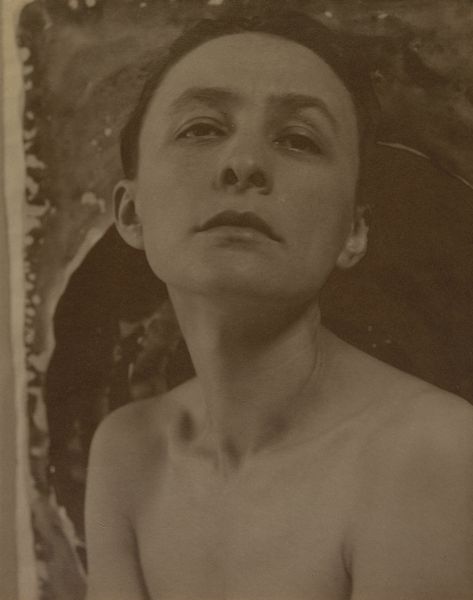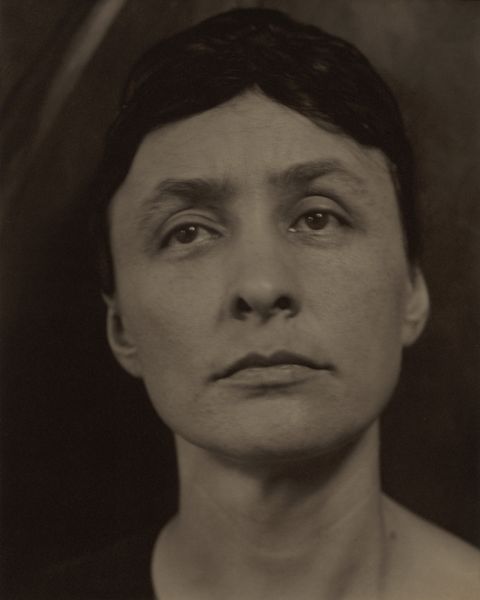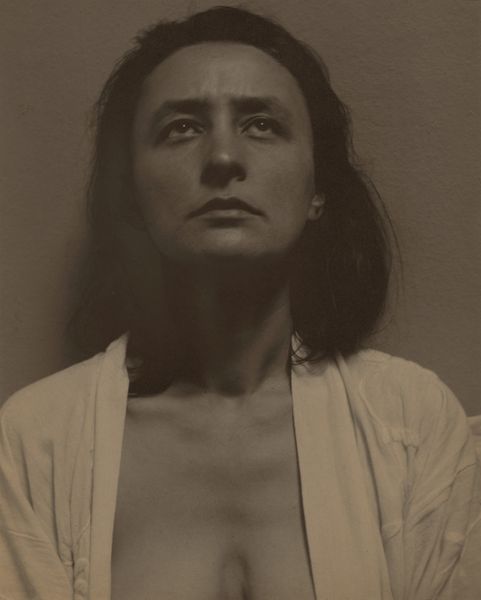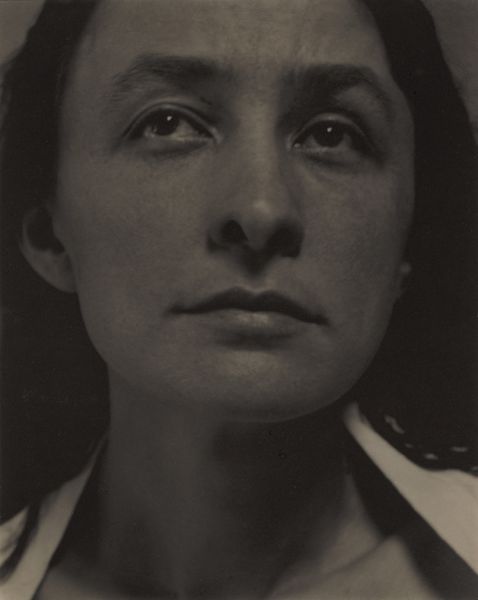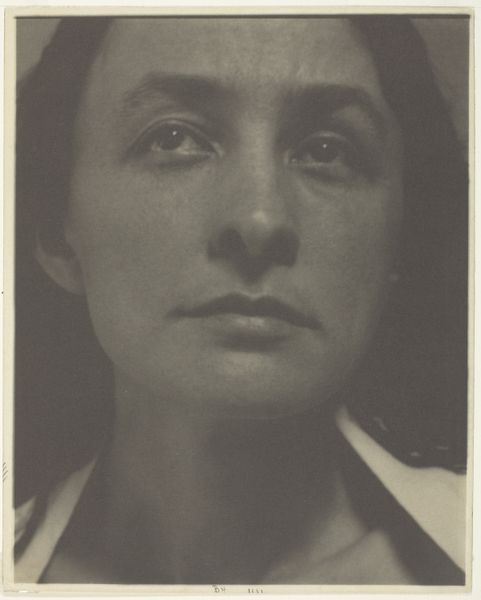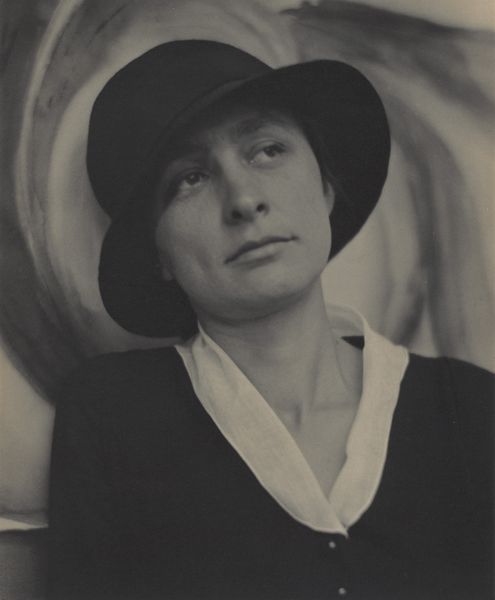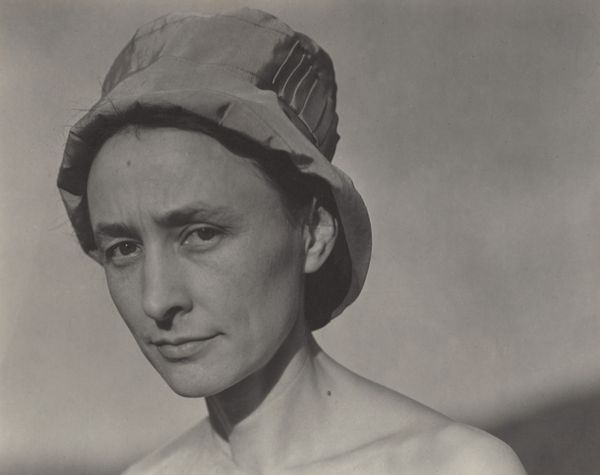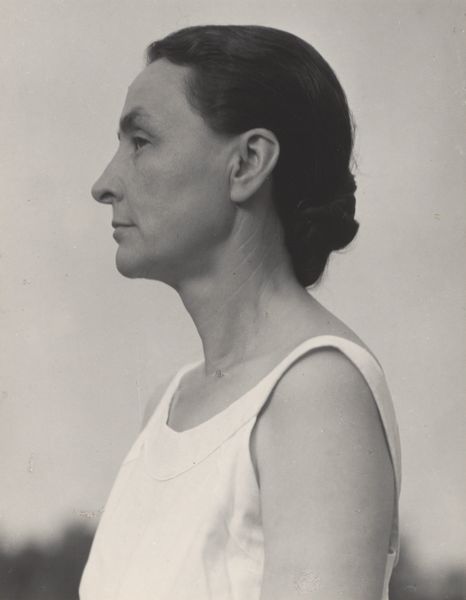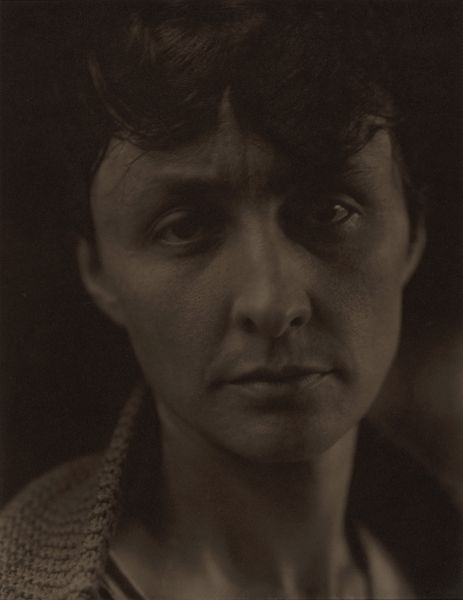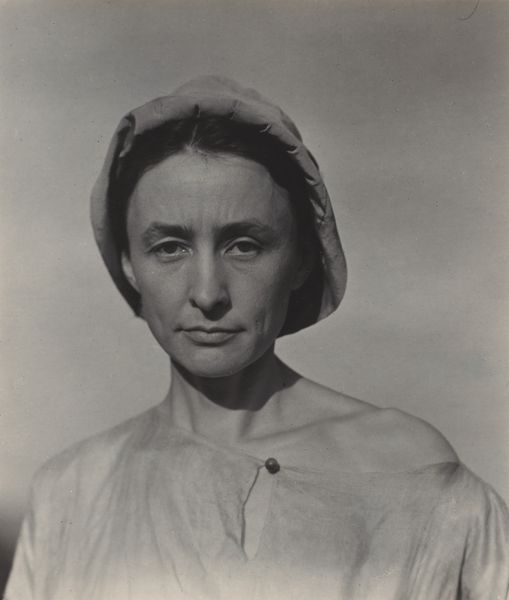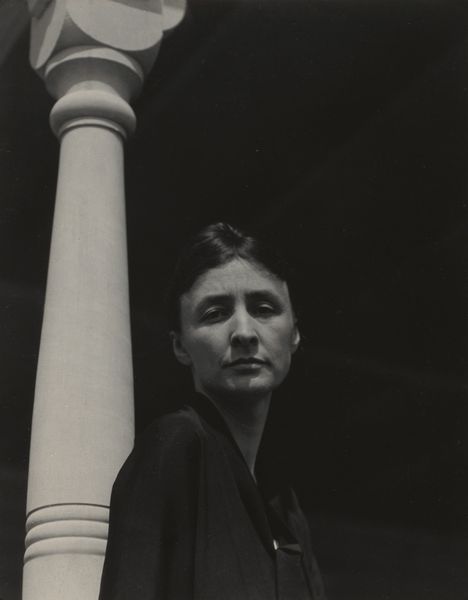
photography, gelatin-silver-print
#
portrait
#
low key portrait
#
portrait image
#
pictorialism
#
charcoal drawing
#
photography
#
historical photography
#
gelatin-silver-print
#
modernism
#
monochrome
Dimensions: sheet (timmed to image): 24.1 × 19 cm (9 1/2 × 7 1/2 in.) mount: 56.5 × 46.4 cm (22 1/4 × 18 1/4 in.)
Copyright: National Gallery of Art: CC0 1.0
Editor: This is a photograph titled "Georgia O'Keeffe with Matisse Sculpture," taken by Alfred Stieglitz in 1921, using the gelatin-silver print process. I’m struck by the monochrome palette and the juxtaposition of O'Keeffe's gaze with the presence of the sculpture. How do you approach interpreting a photograph like this? Curator: My primary focus falls on the formal arrangements within the frame. Notice the composition. It is divided, subtly, into thirds. O’Keeffe’s face, itself a study in subtle gradations of light and shadow, occupies one. The sculpture, another. Then, consider the tonal range. Editor: The tonal range is quite limited. A study in beige and cream. Curator: Precisely. It leans heavily on the mid-tones. Ask yourself: what does the tight tonal range accomplish? Does it flatten the space, emphasizing the two-dimensional nature of the photograph? Is it possible Stieglitz pursued a Pictorialist strategy? How is the artist attempting to transcend the photograph’s documentarian reality? Editor: I hadn't considered how Pictorialism could play a role here. Focusing on those formal aspects shifts my understanding quite a bit. It's not just about *who* is in the photo, but how Stieglitz is constructing the image itself. The lighting, the limited palette... they all contribute to a carefully constructed artistic statement. Curator: Indeed. Consider the subtle grain of the gelatin-silver print and the careful arrangement of the subjects within the frame. These material and compositional elements shape our experience. The medium, its texture and tonal possibilities, contribute fundamentally to meaning. It moves beyond simple representation. Editor: So, by focusing on the structure and materiality, we can move towards decoding the visual language that Stieglitz is employing. It's less about external references and more about what's intrinsically present in the artwork. Curator: Precisely. It is in this close reading that art historical methodologies truly begin.
Comments
No comments
Be the first to comment and join the conversation on the ultimate creative platform.

